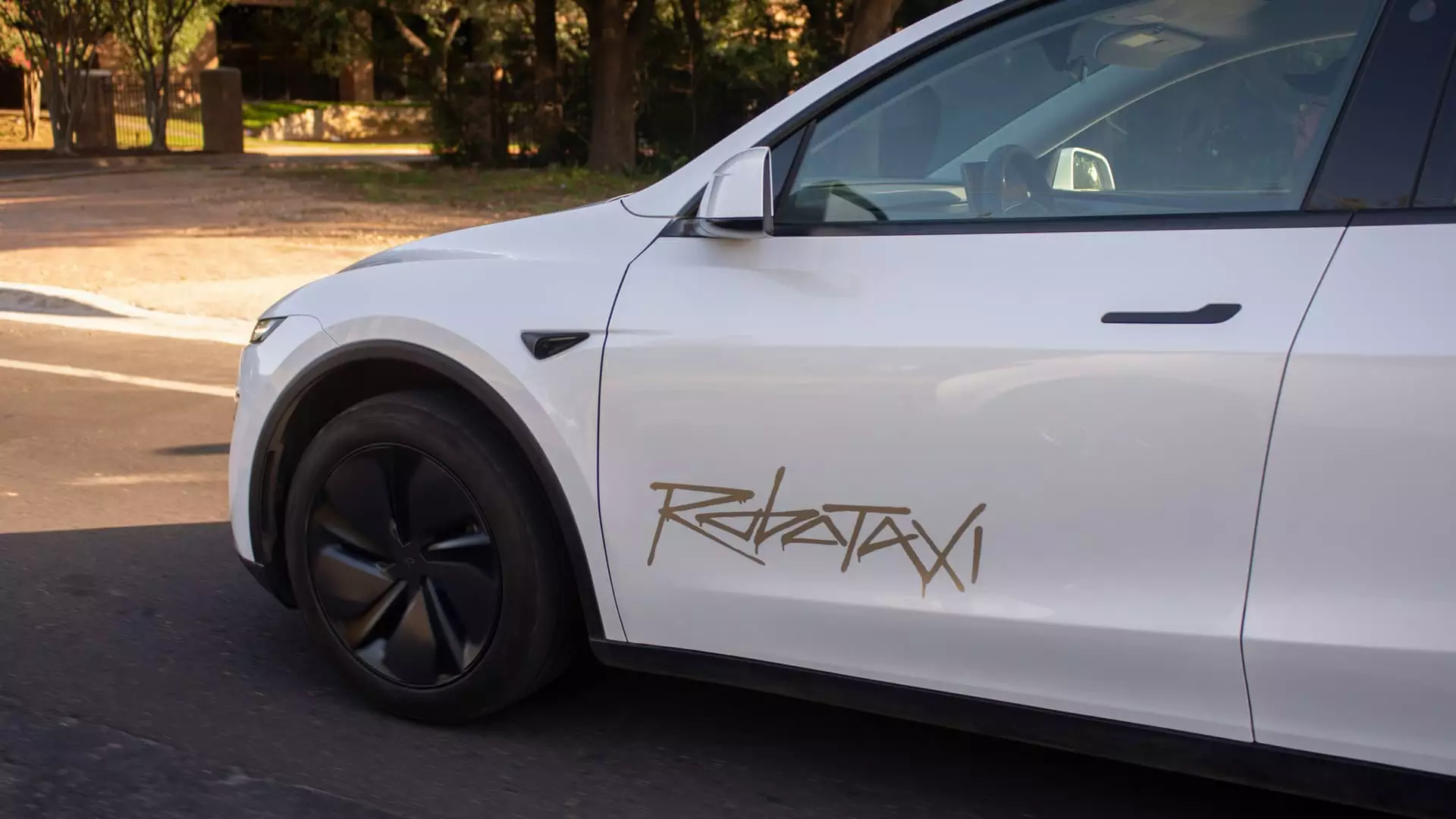Last weekend marked a pivotal chapter for Tesla as its Model Y robotaxi officially began operation in Austin, Texas. Enthusiastic supporters of the brand might celebrate, but a deeper dive reveals an ambiguous state of affairs that raises important questions about the implications of such ambitious technological advancements. Tesla’s recent unveiling, widely viewed as a long-awaited step in autonomous transportation, also serves as a stark reminder of the realities of corporate pressure, the pursuit of profit, and the ethical considerations that accompany groundbreaking innovations.
While shares jumped by 10% following the launch, one must wonder whether the optimism overshadowed legitimate safety concerns and regulatory scrutiny. The invitation-only nature of the initial rollout appeared to target a self-selected group of Tesla aficionados—individuals who might have vested interests in the company’s success, rather than a representative sample of average consumers. Does this audience truly reflect public sentiment or merely amplify the chorus of devoted supporters? A mixed bag of reactions from initial users hinted at a reality more complex than the company’s marketing might suggest.
Promises and the Pressure of Delivery
Elon Musk, Tesla’s indefatigable CEO, openly celebrated the occasion on social media, emphasizing a flat fare for rides and heralding the culmination of years of effort from the company’s AI and software teams. However, this celebratory tone rings hollow against the backdrop of Tesla’s urgent need to meet investor expectations. Musk has been relentless in his promises of a future defined by autonomous fleets, and the pressure to deliver has never been more palpable.
Yet, reports of the Model Y robotaxis exhibiting erratic behavior—like unlawfully navigating against traffic and halting unexpectedly in the presence of stationary police vehicles—should be cause for concern. Such incidents betray a narrative that Tesla has meticulously crafted around the reliability and safety of its technology. If we are to believe that we’re on the verge of a transport revolution, we must ask whether these early signs are foreshadowing deeper flaws in both the technology and the logic driving its deployment.
Racing Against Competitors
Interestingly, Tesla’s launch comes at a time when competition in the autonomous vehicle space is heating up significantly. With Waymo consistently reporting over 250,000 commercial driverless rides weekly and milestones reached by Chinese competitors like Baidu’s Apollo Go, the urgency to gain competitive ground is palpable. Musk’s declaration that Tesla aims for “hundreds of thousands, if not over a million” self-driving vehicles on the road by next year falls into the category of lofty optimism, especially in light of their ongoing regulatory challenges and the technological hurdles still to be navigated.
The rat race against established and emerging players highlights not just a race for market dominance but also raises questions about safety protocols and regulatory compliance. As the Texas deployment unfolds, critics—including lawmakers and safety advocates—have urged a cautious approach. Their calls for delay highlight a genuine concern: if Tesla can’t ensure safety for its passengers and the public, how can it claim to be at the forefront of innovation?
The Ethics of Innovation
The ethical quandaries surrounding the aggressive push towards autonomous vehicles demand robust discourse. Tesla is at the intersection of innovation and responsibility, wherein its decisions could profoundly impact public trust and safety. As the company leans into its autonomy aspirations, it must grapple with the dual-edged sword of progress. The scrutiny from safety advocates provides a necessary counterbalance to the overwhelming enthusiasm from its supporters and investors.
History has shown that technological advancements carry both risks and rewards, and far too often, the former can be overshadowed by the latter. In pursuing the autonomous future, Tesla must remain vigilant about the ramifications of its actions. Will it prioritize expedience and profit over comprehensive safety measures? Or will it take a more measured approach, considering the broader implications of its vehicle fleet on urban landscapes and roadway norms?
Tesla’s ambitious robotaxi project serves as a litmus test for the future of self-driving technology. As the Model Y navigates Austin’s streets, questions surrounding safety, governance, and ethical responsibility bubble to the surface, urging society—as well as the stakeholders of this groundbreaking venture—to realize that innovation must be carefully balanced with caution.


Leave a Reply